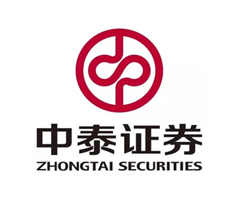Coal Industry Output Efficiency in China

By Chen Chen Lijun Song
May 23, 2018 - The total operating cost of the thermal coal leading enterprises has increased, and the increase in the price of trade coal has played a large role. In 2017,China Shenhua,Shaanxi Coal Industry,Yanzhou Coal IndustryThe total operating cost of leading coals in such industries rose by 30% to 40% year-on-year, and the cost per ton of coal (coal operating cost/commercial coal sales) generally increased by 10% to 20%, of which the increase in trade coal costs accounted for the increase in coal cost. Both are over 50%, and the increase in the purchase price of trade coal is the first factor that drives up the total cost of leading coal companies. Taking Shaanxi Coal Industry and Yanzhou Coal Industry as examples, in 2017, the gross profit of trade coal accounted for only 2.4% and 1.6%, and the profit contribution was very limited.
Industry leading coal companies: Units have low production costs and less fluctuations. The production cost of self-produced coal units in 2017: Shaanxi Coal Industry RMB 114.2/ton (+7.1%),China ShenhuaRMB 108.5/tonne (-0.4%), Yanzhou Coal Industry was RMB 200.8/tonne (-0.5%), among which the Yanzhou Coal Industry had a certain relationship with the cost dilution brought by the new low-cost mines in Inner Mongolia, and the three leading companies produced their own coal. The cost is 100-200 yuan / ton, the average volatility is only 2.1%, while the industry other thermal coal company unit production cost is 200-450 yuan / ton, the average volatility is about 16.6%, the leading company in the output efficiency and cost Control has a strong advantage.
Changes in the structure of coal production costs: The proportion of variable costs decreased, and the proportion of fixed costs increased. In the downturn of the business climate (2012-2016), coal companies achieved reductions in production costs mainly by reducing the standards for excavation of wells and mines, lowering staff salaries, lowering equipment purchases, excluding various production funds, and using special reserves. After phase-out and change, the proportion of variable costs (raw materials, fuel and power, labor costs, etc.) of various types of coal enterprises has been reduced, while fixed costs (depreciation and amortization, maintenance costs, and processing costs) The proportion of mine engineering fees, land acquisition and land subsidence compensation etc. has increased. We believe this is related to the elimination of bloated personnel by coal companies and the expansion of advanced mine production to increase output efficiency and increase economies of scale.
Comparison of advantages in coal production areas: "Three West" regions have greater advantages. Mine production capacity is located in Shaanxi, Inner Mongolia, Shanxi, or “Three West” coal enterprises. Taking Shenhua and Shaanxi Coal as an example, the production cost of self-produced coal is significantly lower than that of coal enterprises in other regions. On the one hand, the coal mining in the northwest region is of small year and the mining depth is still relatively low. Therefore, the cost of raw materials, fuel, and power is relatively small. On the other hand, the mine area in this area has large scale, high per capita output, and relatively low price level, which makes the unit labor cost. Low; At the same time, the difference in accrual costs is also an important reason for the different production costs.
Metallurgical coal enterprises: The increase in sales costs per ton of coal is larger than that of thermal coal companies, and the cost advantage in Shanxi is more obvious. In 2017, the increase in the cost of sales of tons of coal for coal metallurgical enterprises was generally above 30%, which was higher than the increase of 10% to 20% for thermal coal leading enterprises. This may be related to the greater increase in the price of metallurgical coal. We found that the cost of tons of coal from the metallurgical coal companies in Shanxi Province was lower than those in Hebei, Guizhou, and other places. At the same time, the increase was relatively smaller, and the cost advantage was still obvious.
Period expenses: During the period of coal companies, the cost rate has generally declined, and the expenses of Shenhua and Shaanxi coal have risen instead of rising during the period. After the coal price rebounded in 2016, the profitability of coal enterprises became stronger, and at the same time, the increase in operating control expenses was optimized. During the period of coal companies, the cost ratio generally began to decline. In 2017, the cost of most coal-fired enterprises in tons of coal (the period during which coal was accounted for as a percentage of revenue) rose to varying degrees, thermal coal companies generally increased by about 10%, and metallurgical coal companies rose by 20%-40%, but benefited from scale. In terms of production, China Shenhua and Shaanxi coal industry experienced a 3% year-on-year decrease in the cost per ton of coal and a 1% increase over the same period of the previous year. It did not rise or fall, making the company's ability to release performance under the high coal price conditions.
CoalZoom.com - Your Foremost Source for Coal News

